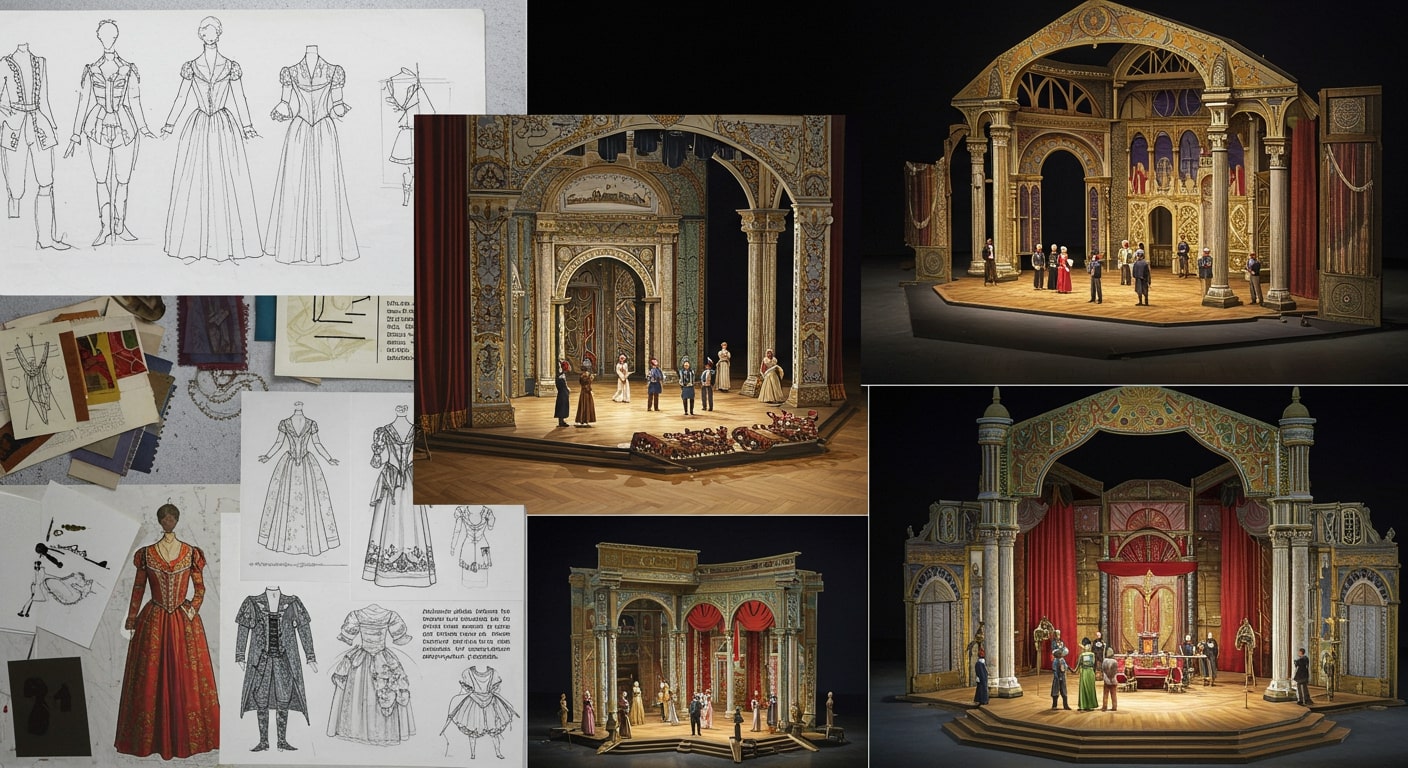Stage costume is an element of the performing arts, a design art that encompasses all the garments and accessories used by actors in a performance, both for their roles and for the stage. Beyond everyday attire, it functions to create a narrative language using color, form, and material to support the narrative idea, drawing on the text. Stage costume creates an immediate impact on the audience when the curtain opens or the lights come on, creating a dynamic environment for the performance. Costumes, which can be defined as the attire of a specific period, setting, or style in general, must not only be appropriate to the spirit, time, and place of the dramatic performance but also be fully adapted to the actor's role.
The Function of Stage Costume
Stage costume is the deliberate combination of fabrics, colors, shapes, and accessories used by the artist. It is not only a means of covering but also a visual narrative. The primary function of costume is to fully reveal the character of the role. These garments convey information to the audience regarding the character's age, gender, occupation, social status, geographical location, season, and time of day.
Costume also helps indicate the time and place where events take place, setting the overall tone and style of the play. Costumes showcase the relationships between characters, the defining characteristics that distinguish the main character from others, or the contrast of one group with another. Good costume design should not be so intense or dazzling that it distracts the audience from the essential facts of the performance, but should maintain the action-reaction link established between the stage and the audience at all times. Costumes reflect not only the external appearance but also the character's inner world and subconscious, potentially conveying ideas and emotions that are not merely meant to be seen and viewed, but also to be read and understood.

About Stage Costume Design and Process (Generated by Artificial Intelligence)
Effects of Costume on Character
Stage costume is designed to give the actor a new identity for the character they portray. Used in conjunction with makeup and hair dressing, the costume allows the actor to completely assume a different identity through their attire. These visual tools reveal a character's soul, transporting them from the textual page to the three-dimensional world, and serve as a visual narrator in theatrical or film performances.
The designer can achieve exaggerated stylizations of the actor's physical features through costume applications. The costume designer not only provides a new personality but also has the ability to transform the actor's physical appearance in collaboration with the makeup and hair stylist. A successful costume designer must ensure that the actor feels comfortable wearing the right outfit, while ensuring that the costumes do not impede or restrict movement. When the actor is integrated into the costume, they establish connections with the play's setting and personality.
Costume Design Process
A stage costume’s conception, development, and presentation constitute a process that begins on paper and culminates in its performance on stage. The design process is rooted, above all, in the script. The costume designer begins by reading the script and then consults with the director, producer, and lead actors to gain insight into the director's vision for the production.
The designer must be knowledgeable about the history of clothing, the manners and customs of the period, and must analyze the dramaturgical structure of the performance. They must also be familiar with pattern-making and model-application techniques and demonstrate practical experience. A costume designer aims to captivate the audience by conveying a world of imagination, dreams, and reality, aesthetics, emotion, and interpretation. Costumes encompass the clothing and accessories worn by the actors during a performance and must also fully reflect the characters' personalities in accordance with the script. In addition to the primary materials, complementary elements such as accessories, shoes, wigs, masks, and makeup are also used in the performing arts.
The Relationship Between Stage Costume and Daily Life
The stage is a reflection of life, and stage costumes, thanks to their high appeal, influence everyday clothing and lifestyle. These positive effects of staging on everyday wear are also used as a method of evaluation and feedback for the fashion industry. Ready to wear clothing manufacturers and fashion designers often establish relationships with the show business when designing new products, particularly using film and television costumes as a tool for research.
Clothing designers have utilized stage costumes to determine social tastes. A costume designed for the stage can directly influence fashion trends. Staged costumes play a role in revealing public expectations for clothing manufacturers, thus saving time and money. Through these performances, audiences examine the design features of the costume (model, color, pattern) and, through indirect experience, determine the characteristics they desire in their own clothing.

